Inspired by the dialogue that followed “Is Art Worth It?,” a piece I recently wrote for the Weekly about the trends and general state of the visual arts in Tarrant County, the Weekly and I agreed to bring together some local movers and shakers to continue the conversation. –– Christopher Blay
Fort Worth installation artist Christopher Blay curates the Art Corridor galleries at Tarrant County College Southeast. He is currently working on public art commissions in Fort Worth and Dallas.
One of three public art commissioners for Fort Worth and Tarrant County, William Campbell has just celebrated his 40th year as an art entrepreneur. William Campbell Contemporary Art represents local, national, and international artists.
Alison Hearst is assistant curator of the Modern Art Museum of Fort Worth and is responsible for the FOCUS series. Hearst has a bachelor’s degree from the University of North Texas and a master’s from Texas Christian University, both in art history.
As director of TCU School of Art, Sally Packard is interested in the role art plays in daily life. She also is an accomplished artist who has exhibited widely across the United States and in Europe.
Jay Wilkinson, who studied at the Pratt Institute in New York City and UNT, is a surrealist painter and multimedia artist who often uses found objects to create large-scale sculptures. He is an inaugural recipient of ArtSouth, a residency program by Fort Worth South Inc. on the Near Southside.
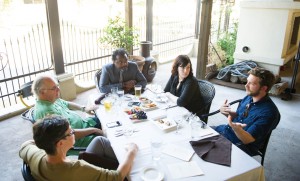
Photo by Brian Hutson.
Blay: I wanted to do this for the benefit of people who maybe don’t have art as a priority in their lives, with everything else going on in the world, and because the bulk of this issue is devoted to the visual arts, I thought a question about the importance of art would be a good starting point. Jay, I want to start with you. I’m trying to get at this idea of why make art, especially in Fort Worth.
Wilkinson: For me, it’s never necessarily been a choice, so I think the thing is, it’s really just kind of a breath, like you just kind of have to. And then there is something really exciting about being able to grab what the world gives you and turn it into something. And Fort Worth is a little bit one of those places that’s still starry-eyed, a little magical. Art is still magical around here. You can kind of do things you’re not supposed to. I kind of come from a slightly underground, slightly criminal version of art, with not a lot of money and [an interest] in making big things. A lot of times, instead of being met with apprehension, it’s usually met with a lot of appreciation, so that’s a really nice reason to be here.
Blay: Alison, tell me what you’re doing at the museum and what brings you to curating.
Hearst: I started at the museum about seven years ago but recently took over the FOCUS program. What’s really important to me is to show the works of emerging but also midcareer artists that haven’t been shown in this area.
Blay: Sally, what do you have to say about the importance of art here and in general?
Packard: As an artist, I sort of am wondering what that means in terms of pumping out objects and the desire to do that. Some of us don’t have that desire, specifically, but I’m certainly an object maker.
Blay: Bill, what can you share about your experience as a gallery owner?
Campbell: It’s probably as difficult as being an independent artist, because there are so many creative people involved that unless you take the reins and try to put some order to it, it would be absolute chaos. We spend most of our time doing administrative work that has nothing to do with selling art. Which is a pain in the side. It’s very time consuming, but you’ve got to do it to maintain the other part.
Blay: What kind of support structure exists for each of you, from the city, the public, and the patrons? What sorts of structures exist that make the things that you do possible? And what are the obstacles?
Hearst: We’re privately funded, so we don’t rely on the city, and there are definitely benefits to that. As far as obstacles go, it’s like any institution, public or private. I think what’s nice is, we’re close to Dallas, but there’s still a disconnect. I feel like a lot of my friends in Dallas won’t come out to the shows here, but I think it’s also a little bit of a benefit for all of us because there’s just more freedom to do what we want when you’re the only game in town.
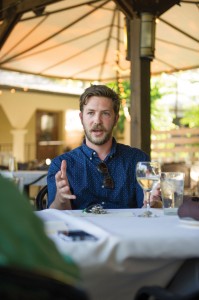
Wilkinson: This question has been the biggest issue for me and everybody who’s kind of in my world as an artist. I went to art school for a little bit, but I couldn’t afford it. I got a $15,000 scholarship to Pratt and was very excited. But I got there and was like, “Oh, I still owe $20,000 more, so OK. Bye, guys!” When you escape academia as an artist, there aren’t a lot of options, and it’s very hard to get into a tight-knit circle. So many of my friends [and I] come from a place of not knowing how to put it together or present it to the right audience and so forth. I think there’s a lot of fear with young artists and people I know. If they put all their money and all their work into something, where does it go? We don’t really know how to begin, and there’s a lot of trying to get off the ground. And I think that Fort Worth loves art but doesn’t know how to support it.
Campbell: First of all, I think that’s shortsighted, and I mean that sincerely. I don’t mean it to be caustic. Creativity is something that doesn’t stop, so if you’re making an object, and it ends there, what’s the carry-through? I can say this. I’ve been in business 40 years and can tell you that most artists in Fort Worth never come out [to any shows]. So how do you learn about your profession, you know?
Wilkinson: They don’t. We don’t. And on top of that, for some reason, they feel so separated from this [art] world. And a lot of them don’t work as hard as they should to get in the right circles or don’t try to meet people.
Campbell: I think the opportunities for artists to learn, or [for] people who want to be gallerists, are all over the place. You can go to any gallery anywhere and talk to people. You know what they love to talk about? What they do.
Wilkinson: Yeah, I don’t know. Maybe it’s a stigma or something. I’ve been at this for five years in town, and I just met you guys. Maybe it’s a fear that we’ll be rejected.
Campbell: Well, I think it’s a personality [trait of] creative people, who aren’t always terribly gregarious. And everything you do is very personal, and I understand that, but on the other hand, in my experience, it’s such an embracing business. There are always schmucks in any business, you know, and you just have to take it at face value. But the rest of us are lovely people, and they do like to talk about what they do.
Blay: Sally, do your grad students have some of those same concerns about how to connect outside of academia?
Packard: They do. I may be blowing this up, and it’s because of what I’ve been doing, and seeing that we’re the entertainment. We’re analogous to athletics, although no one pays attention to us. Not the visual arts. I don’t want galleries to go away. I don’t want museums to go away. I don’t want people to stop making things, but, for me, we have to embrace the social issues of this time, because we are screwed. And I’m talking about every social, sociopolitical thing that’s happening in our world. And I believe that artists are the ones who have to be talking about this. I don’t know what it means for the galleries, but we need to be agents of social change. I want to make a difference in my world, and I don’t want it to be just in our circle. I think it is time to take the ego out of art. I want meaning. I mean, I love beautiful things, for the very reason that looking at something beautiful gives me a kind of peace. But [the Modern’s 2013 exhibit Mexico: Inside/Out] was a great example. We truly make contributions to the world. I had a nursing student in my office today. She’s taking ceramics. And I said, “Why are you taking ceramics?” She said, “It makes me relax,” and I said, “Yeah, yeah,” but that wasn’t what I wanted. But she kept talking, and she said it allowed her to reflect, to build empathy, all of these things that we all know about the [artistic] process from our own different ways. But I think we’re not connected enough, and I don’t know how to solve that. I just ruined everybody’s time. Sorry.
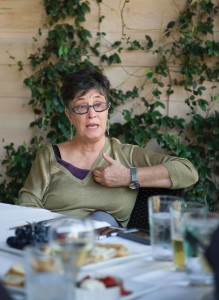
Blay: No, those are very important and honest things that need to be discussed because they speak to the role of art and questions about its importance. I understand what you’re saying. Another thing I’d like to get to –– as it relates to art, exhibiting, and being an artist –– are the considerations that go into putting an exhibition together or selecting artists for representation or exhibition.
Campbell: I would say that, like Alison, we have only so much storage, space, or time to exhibit. Just like you, we flew by the seat of our pants when we started. Nobody taught me how to do this. I wish they had. So as that develops, what you learn is that with all their shades of gray … an artist has an innate sense of creativity that is their fingerprint, their signature. The thing that an artist hates doing is repeating their signature. However, for them to get known, they have to repeat their signature.
Packard: That’s a great point.
Wilkinson: This is the thing. I’m totally with you. I hate it.
Campbell: Well, you can morph that and never lose yourself.
Wilkinson: I know. It’s necessary.
Blay: And the reason I’m asking this question is because I think I’ve heard this question asked by artists in Fort Worth, trying to figure out how they can be a part of what [Bill] and Alison are doing. If I go to art school and graduate, how can I get in a gallery, or if I’m in a gallery, how can I get into a museum exhibit or collection?
Campbell: It’s a support system too, because we try to encourage our artists to go to other artists’ shows. “I’m behind you. I hope you’ll be behind me.” They want to be a part of the mix, but the only way they can do that is to be part of the mix. Consistently.
Wilkinson: You’re right. You’re right. We haven’t been holding up our end of the game. I love my friends. I think some of them are some of the most impactful people I’ve ever known, but it’s exactly true. We’re not going to the galleries. I feel like it’s not the audience’s job to find me, because nobody’s looking for me. It’s my job to put it in front of them.
Campbell: You know, Alison will tell you, they don’t come to us. I mean, we spend way more money than we have on advertising and promotions and things like that. People don’t just walk in the door and say, “I want to buy that.” It just doesn’t happen.
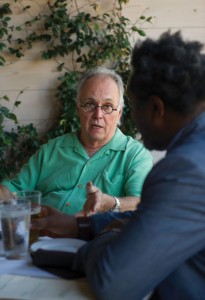
Packard: Or if they do, they don’t follow through.
Campbell: The other part of that: I graduated from TCU in ’69. Harry Gifford was my major professor in sculpture. Anyway, we went to everything with Harry. And I was a preparatory at the Modern for a while when I was a senior. But it was different then. All the people that belonged to the museum were invited to everything, so it was a community of people who were there for the art. Now, [Alison], this is no fault of yours, obviously, but it’s segregated by finances. And that’s every museum in the world. And it’s created its own set of problems. For us and for you. … But from the time we opened the gallery to now, we have one school that sends a lot of kids to us to look at shows, whether they’re art majors or not. It’s TCC. There was a professor at Texas Wesleyan [University] who did that too. Otherwise, we never see students.
Wilkinson: I think that’s interesting. Really, of all of us, the person who has the most impact on people’s view of art is probably [Sally], because [college] is a really crucial time for people. There’s also the stigma of, “How do we appreciate art? We don’t even know what is good or what’s allowed to be good, nor how we’re supposed to see it, feel from it.” … So that’s the nice part of what has been going on with me and [my collective] Bobby on Drums and some of [our] shows. It’s total freedom. There’s no political or financial issue. So it’s strange because that underground freedom that you can get from just putting on this one thing is great, but it’s also not totally supportive. We throw our heart and soul …
Packard: You’re feeling too guilty.
Wilkinson: Yeah, I see what you’re saying, but what I mean is [it’s not] even financially supportive. Every single time I’ve done one of these large shows, it just cripples me and everybody involved. Kinda because the point is that we throw everything into it. Everything. And that’s fine. Right now, it’s just blood, sweat, and tears, but …
Campbell: But some monetary reward would be wonderful.
Blay: Let me bring this back full circle and talk about what’s working and what’s not working. I’d like to get a sense of what you think could work to make Fort Worth the best it could be.
Campbell: I have another question. Why aren’t there more galleries here?
Wilkinson: Yeah!
Packard: Yes.
Hearst: Yes! That’s the thing. It feels so top [heavy]. The top, being museums, are fantastic here, but then there’s a huge gap for the local artists trying to get their foot in the door. I have interns that come in and want to be curators. I feel that I got the job I have because I was curating shows independently on the side when I was a curatorial assistant and gaining experience in doing so. And I think that’s really important for artists and curators. If it’s not happening and someone’s not just handing you an opportunity on a golden platter, go out there and make it happen for yourself.
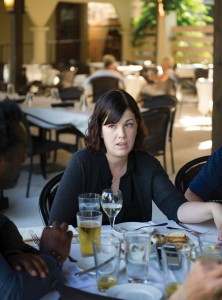
Packard: If you want to be an artist, be an artist.
Hearst: And I’ve put in my own money into these side shows before. We did two at Fort Worth Contemporary [Arts] during the summer when the gallery was closed, both in 2010 and 2011. We got in, as Subtext Projects, and we did shows. We then started having opportunities come to us, but we made it happen ourselves, and I think that’s so important for visibility. But also in creating a scene. I feel like this scene, and this is what we were talking about earlier, there’s a real disconnect. But I think if people are out there creating a scene with music and whatever else as other points of entry, the added bonus is that it brings in other people that might not normally be interested in visual arts.
Campbell: Since we’ve been in business, and this sounds like sour grapes, but you don’t get people coming in to criticize things or ask questions like, “What Is that?!”
Packard: “What’s that shit on the wall?!” Oops!
Campbell: Most people don’t know how to ask, “Why does that artist do that?” Every artist has a story. Most of their artwork, if they’re worth their salt, has something to do with them personally. There’s a storyline that goes all the way through. That’s their signature. But the thing is there aren’t people that come to the galleries, the museums, who have a critical eye or critical thinking about why they’re there. And I don’t mean they have to be intellectual giants. … But you know what I mean?
Wilkinson: I agree with you. There is not a gallery scene, and the galleries behave a lot like bars in the sense of [being exclusive] … and there needs to be different levels of galleries. Plus, you guys are all spread out.
Packard: That’s not going to change
Blay: What’s stopping that from happening?
Packard: Because there’s no physical space for it.
Hearst: Or collector base.
Packard: And collectors. Where are the collectors?!
Campbell: I would say [that] between 1967 and 1980, there was a huge collector base in Fort Worth. A lot of those people now are older or deceased. Their kids basically don’t want the artwork, or they got it for free. Blue chip stuff, through and through. … So where does the next collector base come from? Well, Sotheby’s and Christie’s auction prices [distort] the whole picture. Like $345 million –– that applies to [the] 150 people in the world who can even play that game.
Packard: But is that what everybody aspires to?
Campbell: No. It’s psychologically implanted in [average art appreciators] that art is so expensive.
Hearst: Right. That they can’t afford it. And that whole thing makes it hard for us too, because you can’t play ball with a collector that’s out bidding for something like that at an auction. It’s getting harder for public institutions to play ball, too.
Packard: But don’t you think it’s an indictment of our culture? When I was here in the ’90s, I thought it was hoppin’! … People from Dallas always came. And I don’t know what the essence of that was that left. To me, it seemed hoppin’ compared to now.
Hearst: I feel there’s simply so much going on now too.
Campbell: I think between the three of us, and Jay, you’ll probably realize it the longer you’re here, too, you go to any event, and it’s almost the same people.
Hearst: I feel like that, too. There was a little more going on at the time. Maybe people were working together, but I felt like you would go to the [Modern] and then you would go see something else. Like, there were more events in one evening, so it was more enticing to people driving in. I think about that. I mean, a lot of people come to our lectures, but I think about it, like, “Do I want to go to Dallas at 7 p.m. on a Thursday evening to go to a lecture at the DMA?” I always have good intentions …
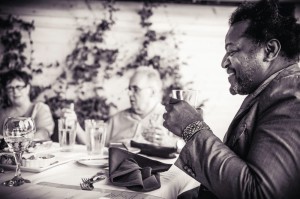
Packard: There are certain people that can build that into their schedule. Of course, Christopher, you go everywhere.
Blay: Well, it goes with what Bill was saying about being present. It’s the same advice that I’ve given to any artist that has asked me for advice. For any other profession, you have to be present and aware of what’s happening. And it’s like Alison alluded to earlier. Curators, critics, and patrons are all busy people and can’t go to everything, so to some degree you have to go to them. If I’m an artist in a room with other artists, curators, and gallerists, it’s not like handing out business cards but more about getting to know who people are and what they’re doing. Simply sharing ideas in the same room. But if you don’t show up, opportunities don’t happen.
Campbell: It’s like advertising and PR. If you’re not in front of them, they forget about you, period.
Wilkinson: I think a failure to launch is a big deal with a lot of artists I know. They do it themselves. They can put it in their coffee shop, down the street, or [at the semi-annual Near Southside block party] Arts Goggle, but the idea to take it to another world.
Hearst: Bill, what you were saying earlier about having people with a critical eye or curiosity to get engaged and to keep coming back? I don’t think it’s only a Fort Worth thing. I think it’s a broader dilemma. The art criticism here –– everywhere, for that matter –– is dying off, and if there were more art critics talking about the things that [every artist] works so hard to do, if there was that press, I think that would catch someone’s eye more than just a Facebook invite.
Blay: I would love to extend this conversation! You’ve all highlighted some things, like low exhibition attendance, not enough art critics or a curious enough audience, and artists perhaps not doing everything they can to be a part of what’s happening in the visual arts in Fort Worth. And also the vacuum in the spot where more galleries and exhibits should be for people coming to the city.
Campbell: I have a comment. My wife and business partner, Pam, and I talk about this all the time. There is a pervasive trend for art-sponsored events to be entertainment. You have a band. You have a bar. My philosophy is that I didn’t get into the art business to run a bar or nightclub.
Wilkinson: I agree with you. And Dee [Lara] and the Exhibitionists [a group show opening on Saturday, Sept. 26, at Shipping & Receiving on the Near Southside] are having the same problem. They have to pack it out, do outside art sales, try to make enough money to make it worth doing. And they also have to have bands, DJs, and booze in order to get people to come.
Packard: So they don’t care about the art?
Wilkinson: They do.
Hearst: They do, but it’s a different audience, [one] that maybe wouldn’t.
Wilkinson: It kinda sucks both ways, because I don’t think that we should have to have music and booze to make this worth going to, but at the same time, I’ve had people who came for that reason only and saw something they’d never seen before or were pushed in a way they didn’t expect to be.
Campbell: Well, it’s the stimulus that younger people are used to, because more events do that.
Blay: I think we have these conversations individually, and my hope is to bring some of these ideas to a greater audience so that there’s an even larger discussion and a direct path to making things different in Fort Worth, because I see that as benefitting everyone. The museums will get a better opportunity to look closer to home, the galleries will have better artists, the artists in turn will be more focused on their work, and the academic institutions can make a direct connection to the community.
Packard: We talk ourselves blue in the face, but I’ve been teaching entrepreneurship classes, but guess what? No artists take those classes.
Wilkinson: I don’t have the stuff to create my own market. There is a market for art, but each artist has to create their own market.
Campbell: That even goes for the artists that are showing in galleries. They [need to be] their own biggest promoters.
Wilkinson: This was a really great thing to do, because I expected to come here and be like, “How do I do anything?” And then you’ve shown me that I really just haven’t been doing it. As an artist, I work really hard, and so do the people I know, but we spin our wheels a little bit.
Hearst: Along those lines, I was watching a Louie episode, and he was getting really down about his comedy career, and his girlfriend was saying, “There’s a million guys exactly like you, and some work harder than others. You are not special.”
Packard: You can still work hard and not get anywhere.
Hearst: It’s true, but can you get anywhere without working hard?
Packard: I guess artists, if they realize that, that’s not very healthy. But they can see it all around them. … so I think you have to say an artist makes art for a certain reason, and you’ve got to stay true to that. And you have to understand why you do it. And because money is so difficult, man, you know, you can kinda get discouraged.
Hearst: It’s kinda what Bill was saying earlier. A lot of our jobs are [composed] of administrative stuff, and staying organized, and replying to e-mails. And artists have to work hard in that regard too. It’s not fun, and promoting yourself doesn’t come naturally for a lot of people.
Wilkinson: I don’t even have a website.
Hearst: Oh, you need to get a website! That is like No. 1. I think it’s important.
Blay: Which is a perfect segue into my next question: What’s up next for each of you?
Hearst: The next FOCUS season features Joyce Pensato, a painter from Brooklyn, Glenn Kaino, a sculptor, and photographer Thomas Demand.
Blay: How about you, Jay?
Wilkinson: The next big thing is the ArtSouth residency and then a couple of new shows with [Fort Worth artist] Jeremy Joel, including one on Gallery Night at our new Race Street space with other artists.
Packard: Our gallery is doing an art tailgate with TCU events, and I continue to work with people across our campus, [including] the [colleges] of science and … nursing.
Campbell: We’ve got a show coming up this month of Cecil Touchon’s work, somebody I’ve represented since 1983. The second show is Otis Jones in October and then Billy Hassell in November.
Hearst: That’s a great lineup.













Maybe the Tarrant County art scene would be assisted by parachuting in semi-famous artists and showing recent ivy league graduate artists at institutions and gentrifying residency programs? Or showing artists who are proven elsewhere and elderly? This would all add to the art community, we here at the Greater Fort Worth and Dallas Fine Arts Council agree and are poised to give our awards and trophies to what we see as the shining stars and only them. We will call it the GREAT WORLD ART AWARDS. Thank you and good night.
I’m with you 100% Gray, couldn’t agree more, any fool can see you’re dead on here Boy.
Dear Commenter: Ft Worth is just dead as far as local art period!!! They would rather fund the improvement of the stockyards and fill the rich and their pockets even more than give people a place to show their true local talent. The art council here is just a bunch of under-paid workers that serve on a board that are TOTALLY controlled by the super rich of this city. This city is so good ole boy that its like the Gotham City of the south.
Art, especially wall art, is a parlor game for rich people. Nothing about it is for regular people. Graffiti is art for regular people.
Roy…..Graffiti is for childish losers, art is for every living human who desires to rise above the level of household variety piss-ants and butt-scratching half-wits. Do yourself a favor, slow up on smoking that stuff a day or two and completely forget the booze. Read a book, won’t cost you a dime, they’re free to borrow at the library. Shave, get a haircut, wash your ass and feet. Everything about art is for all decent, mature, happy adults and children. Amount to something greater than a half-wit, Tea-Bagging jerk. You can do it….really! You will enjoy being normal, I assure you of this. You’re on my prayer-list….GOOD LUCK!!!
As a careered artist, I think Ft Worth has the worst art scene – at least for local artists- anywhere in this country and I travel a lot. First, the rich elitists fund and run all the local artists off because they are total snobs. For example, the Ft Worth Arts Fest in April typically has maybe two or three artists from Ft Worth or even this area included in it, due to the fact that its juried by the rich and snobbish. Also, the solution is for Ft Worth to pattern themselves off of some other cities that cater more to “keeping it local” such as: Oklahoma City, Seattle, Portland, Austin, and many more. These cities provide “coops” where artists show their work, demonstrate their techniques in front of the public and also help fund the coop and its space. But, our mayor and her council are controlled by rich elitists that control who gets what, shows where and how. We tear down buildings that other cities would use to make a public art venue to continue to build billion dollar towers and skyscrapers because thats what fills the pockets of the rich here. We have a “very hidden” talented group of artists in this city that have no where to promote their uniqueness because the rich just want to bring in the “big name” and current most popular mainstream artists from other states. Ft Worth and even Dallas cannot say they help local artists because they DON’T!!! Its all about big money catering to the current artist and the best “fad” they can find at the time. It’s time to give the locals a place to show, work and even help fund. Ohhh but lets spend $175 million dollars on fixing put he stockyards and filling the pockets of ft worth’s elite even more. Ft Worth sucks!!!
Maybe you’re just a crap artist, and that’s why you think this town sucks for art.
Ain’t no maybe about it, you got sXit for brains Slopper, err Slator. What’s going on with Foat Wuffs art is what sweet-smelling Mike Moncrief calls the Foat Wuff Way. We have the same thing going on with our lying, stealing Water Board, City Council, Fort Worth Police Dept., Mayors office, D.A.s office, and Dog Pound and nothing has ever occured to change it. The big shots call the tunes and the Feet-Washing Southern Baptist Repugs and half-wit Baggers reflexibly go for it…..nothing new here. Fixing this problem requires much much that we citizens are willing to pay. We are simply to comfortable and lazy to pay the very high personal price to fix it. Nothing new to see here, and I just want to visit with Jim Bean when I look at it closely.